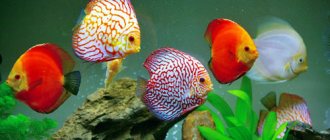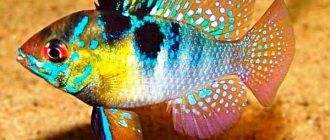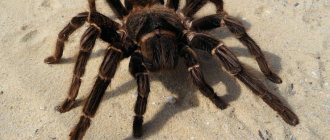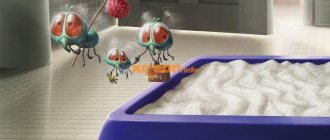African cichlid fish are perhaps one of the most striking representatives belonging to the large cichlid family. They are especially popular among aquarists. Why? It’s not hard to guess, because this group includes so many colorful and diverse individuals that it is literally doomed to popularity! Today we will introduce you to them better with its representatives, and also tell you what conditions of detention they require.
Description
Cichlids from Africa are majestic beauties whose special character and behavior have long captivated lovers. They have not only individuality, but also some intelligence: they are able to recognize the owner and, to some extent, become attached to him.
It is believed that the ancestors of African cichlids were marine fish - which is why among them you can find species that prefer brackish water. Today, this large group of fish occupies a significant part of Africa, living mainly in its eastern part. Their greatest diversity can be found in the Great Lakes of Malawi and Tanganyika, and some of the species have been caught as commercial fish for many years.
Lake Malawi is particularly densely populated by cichlids: about 800 species are already known, of which only 300 have been described. The water there is clear and clean, and the acidity is always stable. That is why aquarium species native to Malawi are demanding of these parameters.
The next most populated lake, Lake Tanganyika, is considered the second deepest in the world, and spreads over a huge area: more than 32 thousand square meters. km. For this it was even nicknamed “lake-sea”. The oxygenated waters of Taganyik are home to 250 species of cichlids, as well as 150 other species of fish. It can also boast that it was there that the smallest and largest cichlid fish in the world were found.
The largest recorded individual is a representative of the species Boulangerochrome small-scaled, growing up to 90 cm. The smallest is Nanochromis transvestitis, which barely reaches 2.5 cm in length.
African cichlids can also be found in other lakes: Victoria, Kivu, Eduard, Rudolf, Albert, George, Nabugabo. But they inhabit not only standing water; some of the species are content with flowing water and live, for example, in the Congo River basin.
Cichlids from Africa are a very large group of fish, including representatives of very different appearances: most often the fish have an elongated body and a striking color. Most of them are carnivores, but there are also vegetarians. Depending on the species, African fish live in an aquarium from 5 to 18 years, and in natural conditions some species live up to 25.
Homeland of fish
All representatives of the Cichlid family live in the African Great Lakes, including Kivu, Albert, Edward, Rudolf, Nyasa, Tanganyika and Victoria (listed in ascending order of area). The inhabitants of the last two reservoirs have been best studied, where they occupied all the ecological niches that could be accessible to fish. In another African lake - Malawi - there are about 500 species.
The total number of these unusual and colorful fish is 1,500 species. They are all known to have descended from a single ancestor, with rapid divergence (10 million years) contributing to modern diversity. According to the latest data, in Lake Victoria, African cichlids are represented by 200 species, all of which differ in food preferences and morphological characteristics. This is an amazing fact. Especially considering the fact that the lake was formed 400 thousand years ago and such active speciation requires a longer period and isolation of populations from each other. Aquarists are attracted to fish not only by their external beauty, but also by their funny behavior and intelligence; it is believed that they are able to recognize their owner.
Kinds
There are a lot of species of these African fish, and just as many among them are those who have been living in amateur aquariums for a long time. Conventionally, they can be divided according to their habitat. Some of the species are endemic, that is, they are found only in the territory of one body of water.
Thus, the colorful Malawian inhabitants are divided into two types: mbuna and utaki. Representatives of the first group are herbivores and live on rocky areas of the bottom with dense vegetation. This greatly determines their behavior in the aquarium: they love to search the bottom in search of food, often uprooting plants in the process.
The group of Malaiwi mbuna includes such popular species as:
- pseudotropheus;
- labidochromis;
- tropheus;
- tropheops;
- melanochromis;
- cinotilapia.
The utaka group consists of fish that inhabit the coastal part of the lake, as well as underwater reefs. There they feed mainly on animal food, not disdaining their relatives. They are much larger than the Mbuna representatives, they can reach 25 cm and therefore they require more space.
In aquariums you can find such Malawian utakas as:
- buccochromis;
- aulonakara;
- lethrinops;
- protomelas.
In the waters of Malawi, there are other species of cichlid fish, larger ones and all of them are predators. But due to their large size, as well as strong aggressiveness, they are almost never found in aquariums.
Cichlids from Lake Tanganyika inhabit its different zones: the surf zone, muddy, rocky, sandy bottom, as well as the deepest layer. From this giant lake the following species came into the aquarium hobby:
- cyathopharynx, or blue princess;
- shell lamprologus;
- bull cichlids;
- various trophies.
Among the aquarium inhabitants you can also meet guests from another large African lake - Victoria. They get along well with the neighbors of Lake Malawi, but are not ready to coexist with the fish of Tanganyika. In addition, they grow faster than those listed and therefore quickly occupy a leading position.
Most often in aquariums you can find such Victorian cichlids as:
- Brown's haplochromis;
- black nanochromis.
Due to their small size, dwarf cichlid species that came from the lakes of West Africa are becoming very popular. More often peaceful, but just as colorful as their larger relatives, they have captured the hearts of aquarists.
The following dwarf African cichlids are especially popular:
- kribensis;
- various pelvicachromis;
- nanochromis.
Sorry, there are no surveys available at this time.
Origin of species
The isolated Great Lakes of East Africa allowed evolution to take its own course. In cichlids it was like a giant explosion, producing a large variety of species in a relatively short geological time, while in other fish the process seems to have developed slowly. It’s no wonder that almost all cichlids in these lakes are endemic, that is, they are not found anywhere else in the world.
Until recently, biologists did not understand the basis for the family ties of such a large number of cichlid genera. Modern molecular techniques have answered a number of questions but raised many others. Although some early hypotheses have been supported by genetic studies based on anatomy, they sometimes strongly contradict established ideas.
As expected, Lake Tanganyika was initially colonized. This was done by West African cichlids, which were representatives of the earliest generations of this family. The cichlids of this ancient lake are genetically diverse and correspond to 11 lineages, implying their origin from 11 ancestral species. Much later, some of these fish left the lake and invaded the East African river systems, through which they reached lakes Victoria and Malawi. Research conducted by scientists on the genetic material of the so-called mitochondrial DNA has shown that the cichlids of Lake. Victoria have a very close genetic relationship: it is much closer than the morphologically similar cichlids in the other two lakes. Almost all of them are almost descended from a line of cichlids that incubate eggs in their mouths.
This scenario implies repeated independent development of almost identical evolutionary adaptations. All three lakes produced cichlids with exceptional anatomical features designed to feed on either other fish, eggs or larvae; adaptations have also evolved for plucking fins, scraping algae, stripping scales, crushing shellfish, and a myriad of other functions. Some reputable biologists considered fish with the same specializations to be closely related - due to the likelihood of developing such unique characteristics several times.
Lake Tanganyika: Mwamahunga (Photo by Philippe Collette)
If this were indeed the case, then the tendency, for example, to scrape algae, would have evolved only once, and the fish that practiced it would subsequently disperse. But the algae scrapers in Lakes Victoria and Malawi have evolved independently from their lake cichlid counterparts. Tanganyika and descend from an ancestor with more generalized capabilities. Thus, genetic studies show evolution repeatedly producing the same solutions to the same environmental problems.
It also appears that morphological features can develop at a completely uneven pace, sometimes completely out of step with genetic changes. Some types of lake Tanganyika has changed very little physically over time: many cichlid fossils, especially tilapia, look quite similar to their current descendants living in this lake. Morphologically, the species of the genus Tropheus have remained almost unchanged, except for their coloration. On the other hand, lake cichlids are varied in size, color pattern and shape. Victoria evolved in an extremely short period of time. More than four hundred species of this lake contain less genetic variation than is found in one species - Homo sapiens. The molecular clock in mitochondrial DNA, roughly graded at the frequency of occurrence of mutations, suggests the emergence of the entire population of Lake cichlids. Victoria for the last two hundred thousand years.
Paleoclimatological data from scientists at the University of Minnesota indicate an even narrower window in the origin of the Lake cichlid population. Victoria. According to their data, this lake almost completely dried up less than 14,000 years ago. Only individual cichlids could survive such a test, and there can be no talk about the survival of entire species. In this case, the rate of speciation shown by Victorian cichlids is truly impressive, because it was not surpassed by other vertebrates. In addition, Lake Nabugabo, a small body of water separated from Lake Victoria by a sandbar and no more than 4,000 years old, contains five endemic species of cichlids. These fish are believed to have close relatives in Lake Victoria, which differ from them mainly in the spawning coloration of the males. Even more remarkable is the fact that the southern tip of the lake. Malawi dried up just two centuries ago. However, it is now inhabited by numerous species and color morphs that are found nowhere else in the world.
Lake Nabugabo: Uganda (Photo by Samuel Roth)
These examples, supported by recent DNA data from Lake Tanganyika, suggest a mechanism for cichlid speciation called reisolation. Apparently, successive drops in the water level in Lake Tanganyika by 600 meters facilitated the formation of color morphs of the genus Tropheus, as well as in all other rocky bottom cichlids. Those populations that previously exchanged genes instead became isolated in small pockets of water. They developed independently, and when the water level rose, they came into contact again, but could no longer interbreed.
Maintenance and care
Fish from Africa vary significantly in size, so the size of the aquarium must be selected based on the species. For dwarf fish, 50 liters per couple is enough, while larger individuals, such as the princesses of Tanganyika, require 150 or more. Some species of fish, especially the duck, are not at all ready to get along with strangers in small areas. They need to be given as much space as possible, delimiting it with shelters, plants and decor. As a rule, in an aquarium they occupy the middle and lower layers, leaving the upper one empty.
Interestingly, many Tanganyika cichlids, when mature, form stable pairs or schools, with the selection of a dominant male. A newcomer will not be accepted into such a group, so the composition of the pets is formed at a young age, once and for all.
The average acidity level for African cichlids is pH 8.5. It is better to select water parameters individually, because its composition varies in all lakes in Africa. Malawi water usually has a pH of 7.7 to 8.7, and in Lake Taganka this value can reach a pH of 9.3. In acidified water, fish stop reproducing, lose color and begin to get sick. They also do not tolerate sudden changes in temperature.
An aquarium for African cichlids must be equipped with a filter, since the fish do not tolerate contaminated water. Up to 30% of the fluid should be changed to fresh weekly. When selecting a substrate, you need to take into account the characteristics and habits of the species. Some individuals are not particularly interested in the ground, like pelvicachromis. Others constantly touch it, and then it should not have sharp edges. In addition, for such species you need to choose plants with a well-developed root system, or strengthen them well at the bottom so that fish do not dig them up.
Feeding
Almost all cichlids in nature are predators, and therefore the basis of their diet should consist of protein. In an aquarium, they can be given dry, frozen and live food. Some species are specially added with carotene to make their color brighter. Herbivorous species prefer foods high in fiber: they can be given special industrial diets, as well as lettuce, spirulina and duckweed.
When populating an aquarium, it is important to take into account the nutritional needs of the fish and not plant vegetarian and meat-eating fish together. Otherwise, carnivores will starve forever, while herbivores risk suffering from poisoning from the remains of protein feed. Channel member Elena Fankenthal will share her experience in selecting food. Watch the video below to learn some secrets about the diet of Lake Malawi cichlid fish.
Who do they get along with?
For a novice aquarist, keeping cichlids can turn into a real problem. After all, there are species that are extremely difficult to live with, such that they can only be populated in a single copy. In addition, each fish has its own unique character and it can be difficult to predict its behavior.
As for the general rules, in no case should you plant slow-moving and veil-tailed fish, such as goldfish or long-finned angelfish. For less active species, such a neighborhood threatens, at a minimum, with their fins bitten off. Neighbors that are too small are also not suitable for a community aquarium: guppies and neons, shrimp, which predators will perceive as food.
But as an obligatory companion for these temperamental waterfowl, the chain-mailed catfish - plecostomus and pterygoplichtas - are recommended. These hard workers will help keep the glass and decor of the aquarium clean, and special horn plates will protect it from the attacks of aggressors. Neighborhood with such schooling and sociable fish as barbs, melanotenia and catfish will help timid cichlids feel comfortable in captivity. Small fry, merrily scurrying everywhere, calms and inspires predators.
Reproduction
As a rule, breeding African cichlids is not difficult. They can even spawn in community aquariums, but this can result in a problem for those who find themselves close to parents protecting their offspring. During the breeding season, even peaceful fish become expressly aggressive, and therefore they are often placed in a separate container.
Some species lay their eggs on a flat stone or in shelters, and some of them carry their offspring directly in their mouths. Almost all species have pronounced instincts and take very careful care of their offspring. There are cases when parents even stole eggs from other species of fish, even very small ones, and then began to take care of them. Most often, both parents do this, but sometimes there are conflicts among them and care is given to one person.
It is interesting that many large African cichlids form stable pairs and live with each other all their lives.
Some species live in communities. For example, in a family of barnacle laprologus, females with offspring, grown-up fry and a dominant male can live peacefully in neighboring shelters. As they grow older, other males also settle nearby.
Cichlid fry tend to grow quickly, but unevenly. In this case, larger individuals will not fail to feast on their smaller brothers. To prevent this from happening, the offspring are sorted by size as they grow.
Common types
It is impossible to list all the types of fish that are kept in aquariums in one article; we will only focus your attention on a few.
- Princess of Burundi is a resident of the island. Tanganyika is considered insectivorous. It is characterized by jumping ability, so it is recommended to cover the aquarium with glass. African cichlids (photo above) of this species are characterized by a noble sandy color with a blue tint and gold “earrings” on the gill covers. For full maintenance you need a flock of 6-10 individuals.
- Blue dolphin. Adult fish have a characteristic color, males with a large fatty growth on the forehead. This is one of the largest representatives of cichlids and even when kept in an aquarium it can grow up to 25 cm in length. By nature, it is a calm and balanced fish that coexists peacefully with other species.
- Melanochromis Johannes are small fish up to 10 cm in size with clear sexual dimorphism. Males are black and blue with light blue stripes or spots (second photo), females are yellow-orange. Very mobile, omnivorous.
- Hummingbird - lives in Lake Malawi, a rare species, but thanks to breeders it is common in aquariums. It has a characteristic canary yellow color, anal and dorsal fin with a blue stripe. For breeding you need a couple and an aquarium of at least 80 liters in volume.
- The Queen of Tanganyika is a spectacular and bright blue fish with dark stripes (in the first photo). They grow up to 35 cm in length, males with an impressive forehead, are distinguished by sedate and measured behavior, interesting character traits and intelligence. Favorite food is snails, main food is squid, fish fillet, shrimp.











